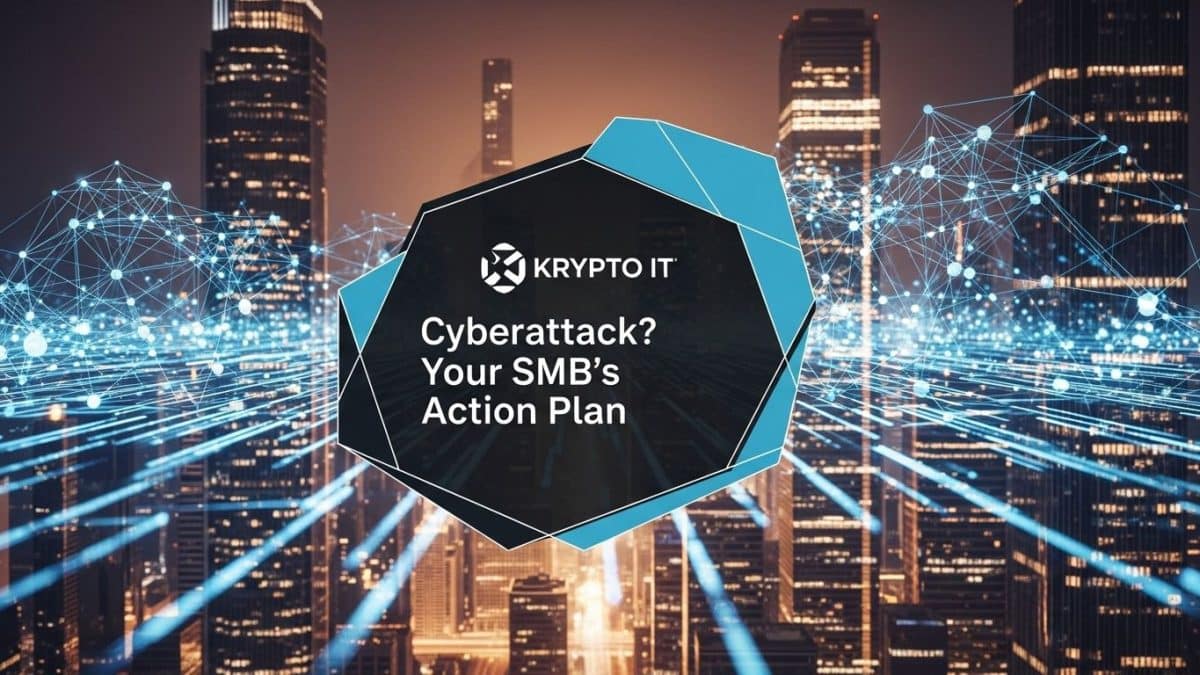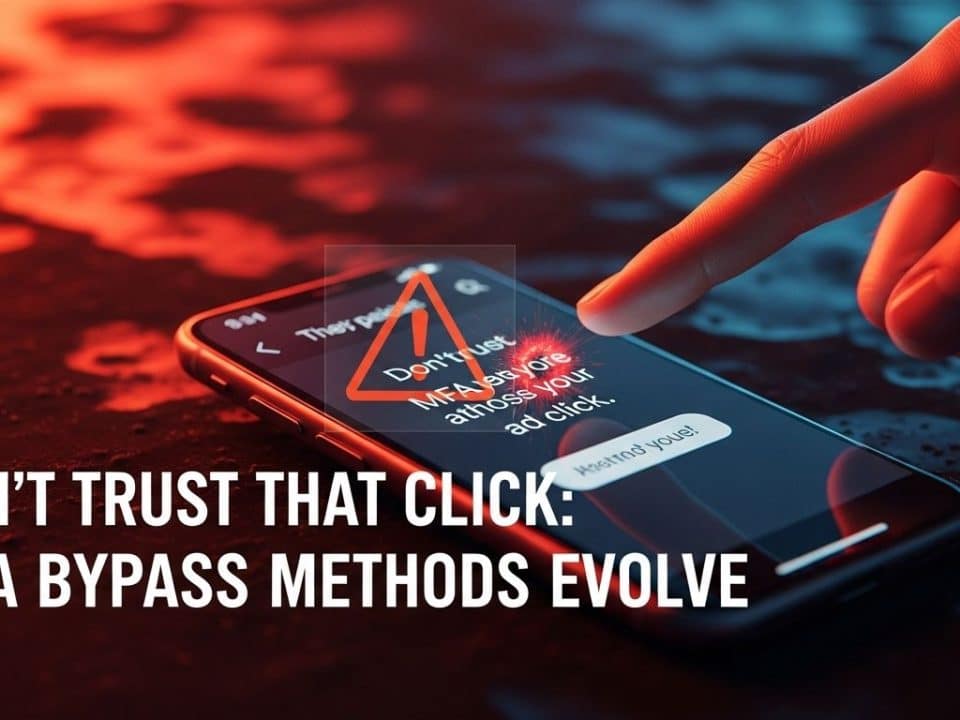
Don’t Trust That Click: MFA Bypass Methods Evolve
July 11, 2025
Is Your Wi-Fi a Welcome Mat for Hackers?
July 14, 2025A Simple Guide for Houston Businesses to Respond & Recover
The unfortunate truth in today’s digital landscape isn’t if your Small or Medium-sized Business (SMB) will face a cyberattack, but when. While prevention is always the goal, even the most robust defenses can be breached by determined and sophisticated attackers. The crucial factor that often determines an SMB’s survival after an incident isn’t the attack itself, but how quickly and effectively you respond. A chaotic, unprepared reaction can multiply the damage, leading to prolonged downtime, significant financial losses, and irreparable reputational harm.
For Houston SMBs, having a clear, actionable plan for what to do immediately after a cyberattack is paramount. This simple guide will walk you through the essential steps to minimize impact, recover efficiently, and learn from the incident.
Phase 1: Containment – Stop the Bleeding Immediately
The moment you suspect or confirm a cyberattack, your absolute first priority is to stop the spread of the attack. Think of it like a fire: you want to prevent it from engulfing your entire property.
- Isolate the Infected Systems:
- Disconnect from the Network: Unplug affected computers, servers, and devices from the network (physically or by disabling Wi-Fi). This prevents malware (like ransomware) from spreading to other systems.
- Isolate Network Segments: If you have network segmentation, isolate the affected segment.
- Do NOT Turn Off Machines: If possible, do not simply power down infected machines. This can erase valuable forensic evidence. Disconnect them and leave them powered on if you have the capability to image them later, or consult with an incident response expert first.
- Disable Compromised Accounts: If you identify specific user accounts that have been compromised (e.g., through phishing or credential theft), immediately disable them or force password resets for all associated services, especially email, cloud platforms (Microsoft 365, Google Workspace), and VPNs.
- Alert Key Personnel: Inform your designated incident response team, IT staff (internal or external), and critical management. Do not broad-cast the issue, but ensure relevant decision-makers are aware.
- Preserve Evidence: While containment is paramount, try to avoid actions that destroy forensic evidence. If possible, take screenshots of suspicious activity, log timestamps, and note down any error messages. This information will be crucial for investigation.
Phase 2: Assessment & Notification – Understand the Damage
Once the immediate spread is contained, you need to understand the scope of the damage and fulfill any necessary reporting obligations.
- Engage Experts (If Not Already):
- Internal IT/Managed Service Provider (MSP): Your first call should be to your internal IT team or your trusted MSP like Krypto IT. They are your frontline responders.
- Cybersecurity Incident Response Firm: For complex attacks (e.g., ransomware, sophisticated data breaches), consider engaging a specialized cybersecurity incident response firm. They have the tools and expertise for forensic analysis and guided recovery.
- Legal Counsel: Contact legal counsel, especially if sensitive data (e.g., customer PII, PHI) may have been breached. They will advise on legal obligations and data breach notification laws.
- Cyber Insurance Provider: Notify your cyber insurance carrier immediately. They can provide guidance, connect you with approved forensic and legal teams, and cover eligible costs.
- Determine the Scope and Impact:
- What systems were affected?
- What data was accessed, altered, or stolen? (e.g., customer PII, financial records, employee data, intellectual property, PHI).
- What was the method of attack (e.g., ransomware, phishing, malware)?
- How long was the attacker present in your network?
- Document Everything: Maintain a detailed log of all actions taken, decisions made, communications, and findings. This is vital for investigation, recovery, and potential legal requirements.
- Notify Relevant Parties (Legal Guidance is Key):
- Law Enforcement: For major attacks (e.g., ransomware, significant data theft), consider reporting to the FBI (via IC3.gov) or your local law enforcement.
- Regulatory Bodies: If sensitive data was compromised (especially PHI under HIPAA, financial data under PCI DSS, or consumer data under state privacy laws), you likely have legal obligations to notify regulatory agencies within specific timeframes. Consult legal counsel immediately.
- Affected Individuals/Customers: Depending on the type of data and applicable laws, you may be required to notify affected individuals. Legal counsel will guide this process.
- Partners/Vendors: If the breach impacts your supply chain or partners, inform them appropriately.
Phase 3: Eradication & Recovery – Clean Up and Get Back Online
Once you understand the situation and have contained the immediate threat, it’s time to remove the attacker and restore your operations.
- Remove the Threat:
- Thoroughly clean all infected systems. This might involve reimaging hard drives, reinstalling operating systems, and deploying robust antivirus/anti-malware tools.
- Identify and remove any backdoors or persistent access mechanisms left by the attacker.
- Force password resets for all user accounts throughout your organization, especially if credential theft is suspected.
- Restore from Clean Backups: Use your verified, clean backups to restore data and systems. Ensure the backups themselves were not compromised. This is why off-site, air-gapped, and tested backups are crucial.
- Strengthen Defenses: As you bring systems back online, implement enhanced security measures:
- Apply all pending patches and updates.
- Strengthen network segmentation.
- Implement or reinforce Multi-Factor Authentication (MFA) everywhere.
- Enhance email security and endpoint detection.
- Review and tighten access controls.
Phase 4: Post-Incident Analysis – Learn and Prevent Recurrence
The recovery isn’t the end. Learning from the attack is vital to prevent future incidents.
- Conduct a Post-Mortem Analysis: What happened? How did they get in? What could have prevented it? What worked well in your response? What didn’t?
- Update Policies and Procedures: Revise your incident response plan based on lessons learned. Update security policies and employee training materials.
- Invest in Proactive Security: Use the insights gained to justify investments in better security tools, specialized managed security services (like Krypto IT offers), or additional employee training. This is a continuous improvement cycle.
Krypto IT: Your Trusted Partner for Cyber Resilience
Navigating a cyberattack can be overwhelming for any SMB in Houston. Having a trusted cybersecurity partner by your side can make all the difference between a minor incident and a catastrophic event. Krypto IT specializes in helping businesses prepare for, respond to, and recover from cyberattacks, providing expert guidance every step of the way.
Don’t wait until disaster strikes to plan your response.
Contact us today to schedule a free consultation and ensure your business is prepared to act swiftly and effectively after a cyberattack.




